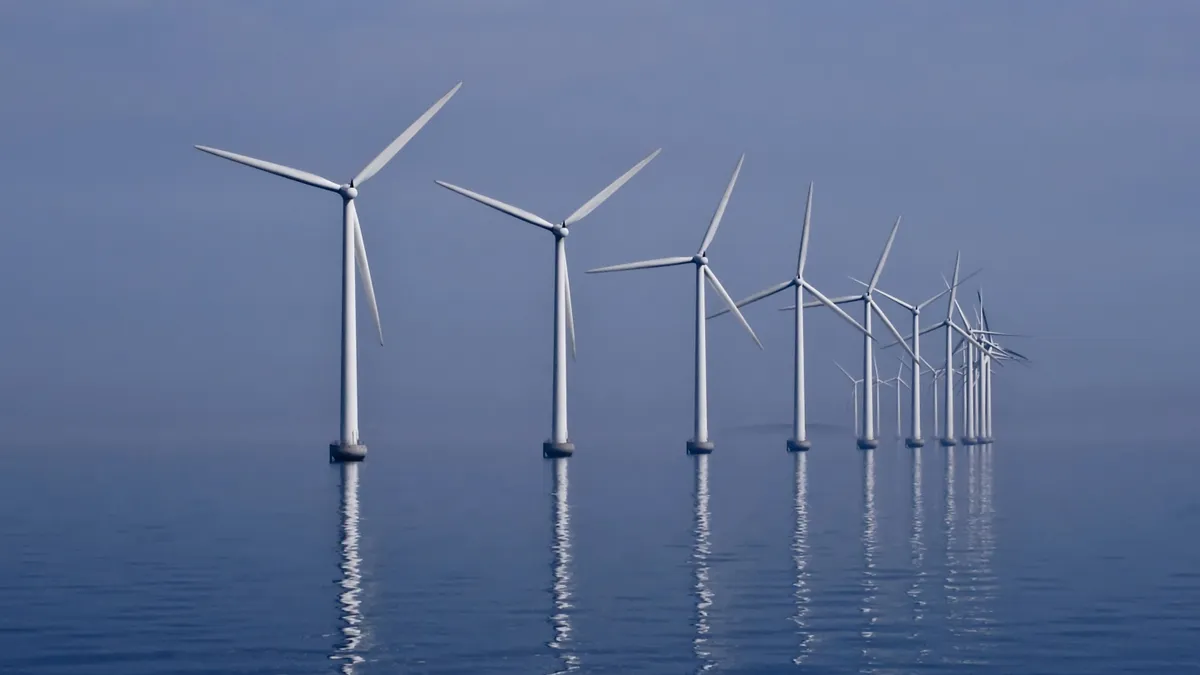Dive Brief:
- The U.S.'s first commercial offshore wind farm is officially operating, delivering wind energy to the community of Block Island and opening the door for more construction off the Atlantic coast.
- The five-turbine, 30 MW facility aims to replace Block Island's diesel generators, with excess generation sent to the mainland via an undersea cable.
- First proposed in 2009, the facility cost nearly $300 million to build and can power 17,000 homes with turbines built by General Electric. The New York Times reports the farm will supply 1% of Rhode Island's electricity thanks to a power purchase agreement with National Grid.
Dive Insight:
Europe has successfully built thousands of megawatts of offshore wind capacity, while the U.S. has lagged behind thanks to low power prices and lackluster political support.
But with the wind production tax credit extension at the end of last year, federal agencies and developers are eyeing the coasts for potential development.
The U.S. Bureau of Ocean Energy Management granted 11 commercial offshore leases for development, designating 12 areas off the Atlantic coast as prime wind farm spots. Wind developers also proposed floating wind farms off the California and Hawaiian coasts.
Massachusetts is also expected to provide a boost after the state passed a mandate for 1,600 MW of offshore capacity by 2027, hailed by many in the industry as "transformational."
While Deepwater's installation is a success, worries have started mounting over wind energy's place in President-elect Donald Trump's Administration.
Trump has repeatedly criticized wind energy over (exaggerated) claims that it "kills all the birds" or constitutes an eyesore for residents, and attempted to halt the construction of at Scottish offshore wind farm near one of his properties.
Whether those comments will translate into an attack on wind energy research or subsidies remains unknown. A transition member told Utility Dive the production tax credit would not be a target of the Trump administration, but a memo from Thomas Pyle, who helmed the energy transition, suggests otherwise.
Despite the uncertainty, Deepwater isn't resting on its laurels. The developer is also eyeing future projects off the coast of New York's Long Island and in Maryland.














